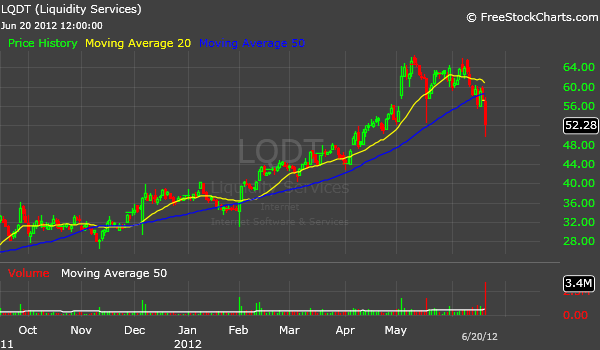I am constantly watching the all-time high and the 52-week high lists to get a sense of emerging trends and gauge overall risk appetite. Both lists are extremely useful equity selection tools and they have been home for all big stock market winners at some point in their history. An all-time high is not an automatic buy signal for me. I have always considered the technical characteristics of the stock (is it just breaking out from a long base) in order to minimize risk of involvement. I also pay attention to the catalyst behind the breakout and the growth prospects of the underlying company. All those requirements have proven to be good filters over time, but with the price of numerous unwanted side effects.
Here’s how overthinking has robbed me from some great market opportunities:
February 2011 – tobacco stocks are clearing major multi-year highs on strong volume. I disregarded the signal, conceptualizing that smoking is dying and that tobacco companies will only see their revenues decline. $PM, $LO and $MO gained more than 50% from that point and are still hovering near major highs.
June 2011 – I noticed that more and more utilities show up on the all-time high list. I knew that it is never a good sign when defensive stocks are on the all-time high list, but I’ve never really considered owning them, because they are not real growth stocks. Many of those same utilities went to significantly outperform during the carnage of last summer as capital went to perceived safety.
September 2011 – a bunch of REITs and home improvement stores ($HD, $LOW) are breaking out to major multi-year highs. I ignored those moves, thinking that no one wants to own those slow moving, boring stocks and besides there is no way those moves will sustain with a housing prices still under pressure. Many of them went up 30%+ over the next six months as Home Depot reported solid earnings growth and rents reached all-time highs all over U.S. Even homebuilders like $LEN emerged to new highs in early 2012.
April 2012 – airline stocks are showing up on the 52-week high list and my eyes can’t believe. My brain quickly disregarded those moves as noise, recalling that airlines have historically been terrible investments. 3 moths later, stocks like $ALGT, $LCC are 20% higher, still hitting multi-year highs and many stocks from the industry are breaking out.
As the saying goes, it doesn’t hurt you what you know, but what you think you know, because it usually ain’t so.
I realize that in hindsight, everything seems so easy and clear and in real time it is never so. The point is that we have no idea how far a stock could go after it breaks out to all-time highs from a solid base. It might go up 15% and then fizzles or it might go up 50% or 200%. We don’t know that in advance and we have no control over it. Good risk/reward technical signals have to be taken. Focusing on price action alone helps to minimize my underlying biases.
How have your biases hurt you and what have you done to cope with them?

